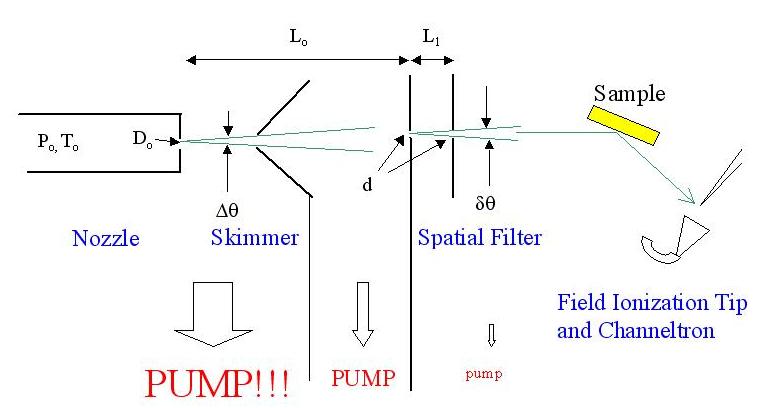Transversely Coherent Helium Atom Beams
Greg Elliott, University of Puget Sound
An important feature of many classes of
materials is that the energetic interactions that determine their thermodynamic
and mechanical properties arise from weak forces that operate on the nanometer
length scale. These interactions nonetheless manifest themselves on a
macroscopic scale in ways that lead to unusual and useful properties.
These statements apply as well to superconductors and ferromagnets
as they do to complex fluids and biological materials. Despite the many
spectacular advances made in developing new microscopy, spectroscopy, and
scattering techniques, a mechanistic understanding of this
microscopic-macroscopic connection has not been achieved in many cases.
Part of the reason for this is that most techniques do not provide simultaneous
spatial and dynamical information on key length and time scales. Diverse
phenomena that involve, for example, thermal activation or exotic phase separation,
can only be partially studied at present because the important microscopic
modes are characterized by nanometer length scales and microsecond time scales
- a regime that is not well-covered by existing experimental techniques.
An approach to address this issue
currently being developed in our laboratory entails a new application of
supersonic atomic helium and molecular hydrogen beams. Specifically, our
goal is to produce a transversely coherent beam of sufficient intensity that
the atomic or molecular analog of dynamic light scattering can be performed on
important length and time scales. Simply stated, this means that we will
collimate a beam of helium atoms such that the transverse product of spatial
and momentum dimensions is comparable to Planck's constant. For this
reason, as is the case for the coherent soft x-ray experiments described
elsewhere on this web site, the ‘brightness’ of our helium source [atoms/(s x
solid angle x unit area)] is the key figure of merit. We have shown that
the brightness of a free jet helium expansion is only 1-2 orders of magnitude
less than that of an undulator at a third generation
synchrotron radiation facility. Such a beam will provide an attractive
probe for studying complex interfacial phenomena since helium atoms achieve the
ultimate in surface sensitivity (much higher than x-rays, for example), they
are non-invasive and non-damaging, and they can provide useful topographic and
spectroscopic contrast.

Our apparatus, a schematic of which is
shown above, is presently being commissioned, with support from an NSF Major
Research Instrumentation Grant and the Murdock Charitable Trust. We have
produced the first pinhole diffraction pattern for thermal helium atoms and
hydrogen molecules and a speckle/diffraction pattern of an irregularly shaped aperture
plate. We are investigating the
possibility of inverting the latter using iterative phase retrieval techniques.